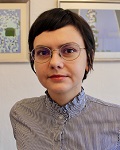2020
Agata Justyna Pietrasik
- Independent Scholar

Abstract
Between 1940 and 1949, exhibitions became a significant medium for depicting the events of the Second World War and the Holocaust in Europe, as well as for informing societies about the crimes committed by the Nazis. These exhibitions drew enormous audiences and were a transnational phenomenon that spread across both eastern and western Europe. Through archival research, the project identifies and maps relevant exhibitions and reconstructs their design and reception. By reflecting upon how these exhibitions mediated historical events, the research reveals the ways in which avant-garde aesthetics of collage and photomontage migrated into mainstream exhibition design, and even influenced its contemporary technological development under priorities of didactic interactivity. Ultimately, the project critically evaluates the way art institutions became singularly crucial agents in rebuilding a postwar world order and questions the status of artworks as documents and as means of disseminating eyewitness testimony.

